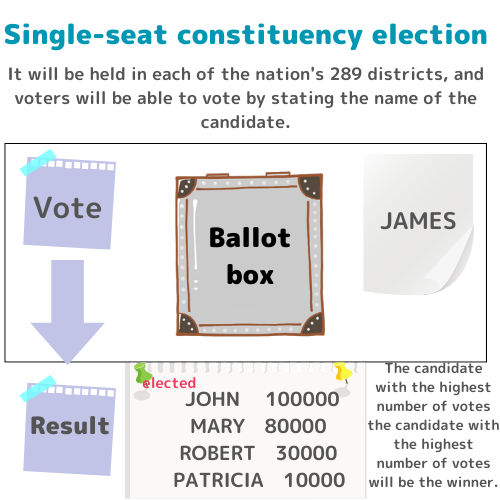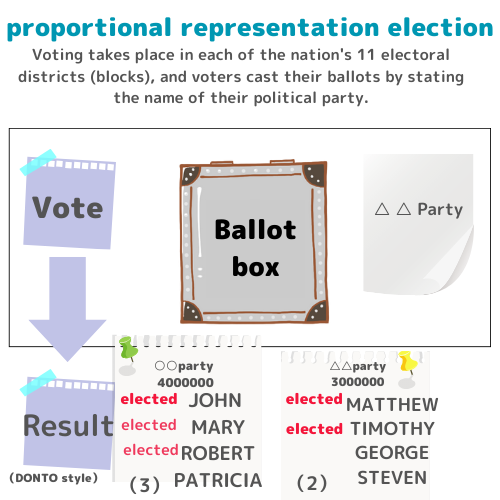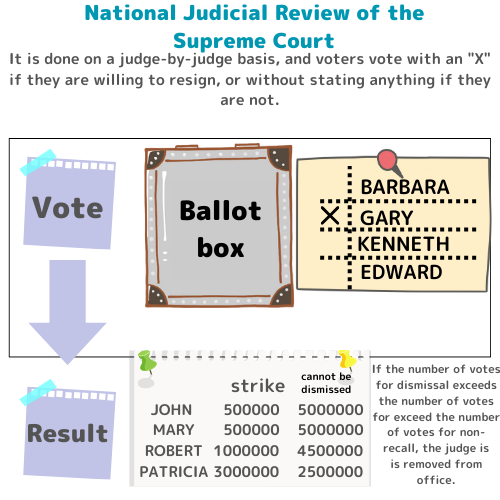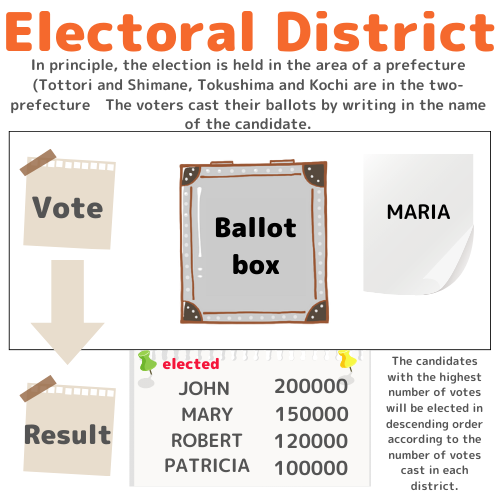So far we have learned about various types of elections and rights.
Now let's look at voting.
About Voting
・polling place
Opens at 7:00 a.m. and closes at 8:00 p.m. (Municipal election boards can move it up or down under special circumstances.)
*enter the polling place
・Polling place entrance ticket and polling place information
In many municipalities, voters will receive a notice with an admission ticket and directions prior to voting day. It is convenient to bring them with you when you vote.
*You can vote without an admission ticket, but it may take time to verify your identity.
It is recommended to bring identification documents such as a my number card or driver's license.

・Voting Process
Review the flow of the process with us in the illustration below so that you don't have any trouble when you go to vote!
(Video created by member)
Type of Voting
Voting By Proxy
There is also a system for electors who are unable to fill in letters on the ballot. This is called proxy voting.
Upon application to the poll supervisor, two assistants are assigned, one of whom fills out the ballot according to the elector's instructions, and the other checks to see if the instructions are followed.
Polling places will also have ballots and Braille equipment available for Braille voting. Voting in Braille is also available!

Voting By Self-Registration
This is the method used in our elections, where the elector himself or herself writes the name of the candidate and the name of the political party.
*For elections of members and heads of local governments, symbolic ballots can be adopted by ordinance.
*Symbolic voting: Vote by putting a "○" in the name of the candidate printed on the ballot in advance.
Electronic Voting
You can also vote electronically. See also the illustration of the electronic voting process!
(Video created by member)
Different ways to vote in different elections
Did you know that different elections have different ways of voting? Make sure you know so that you don't have any trouble during the election.
- General election of members of the lower house of parliament
- House of Councillors regular election
The general election for the House of Representatives consists of a primary election and a proportional representation election, and the National Examination of Supreme Court Judges is held at the same time, so votes must be cast in all three.



(Diagram created by member)
The regular election for the House of Councillors consists of a district election and a proportional representation election, so you need to vote in both.

The number of winners for each party is determined by a d'Hondt formula based on the total number of votes cast for the party. he candidate listed in a specific slot is declared the winner according to his or her ranking on the list, and the other candidates on the list are declared winners in descending order of the number of votes they received.
